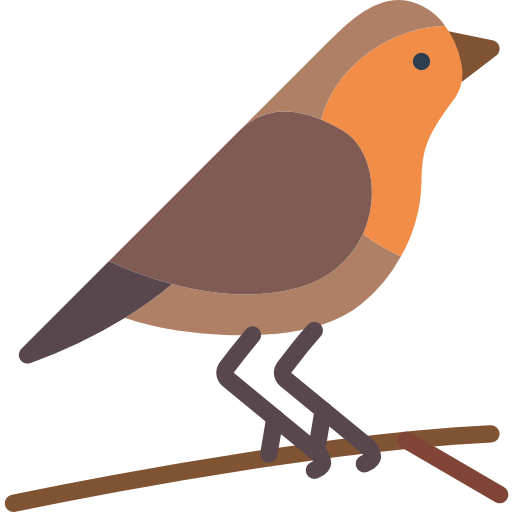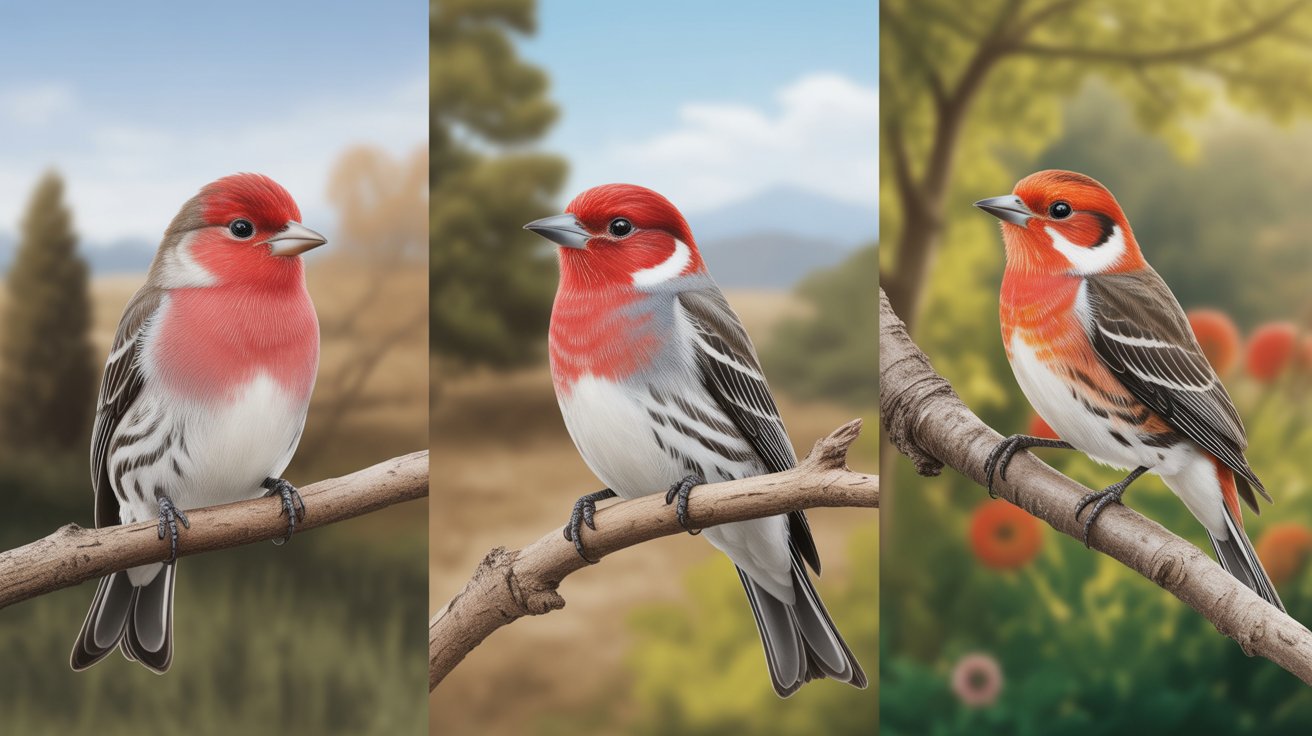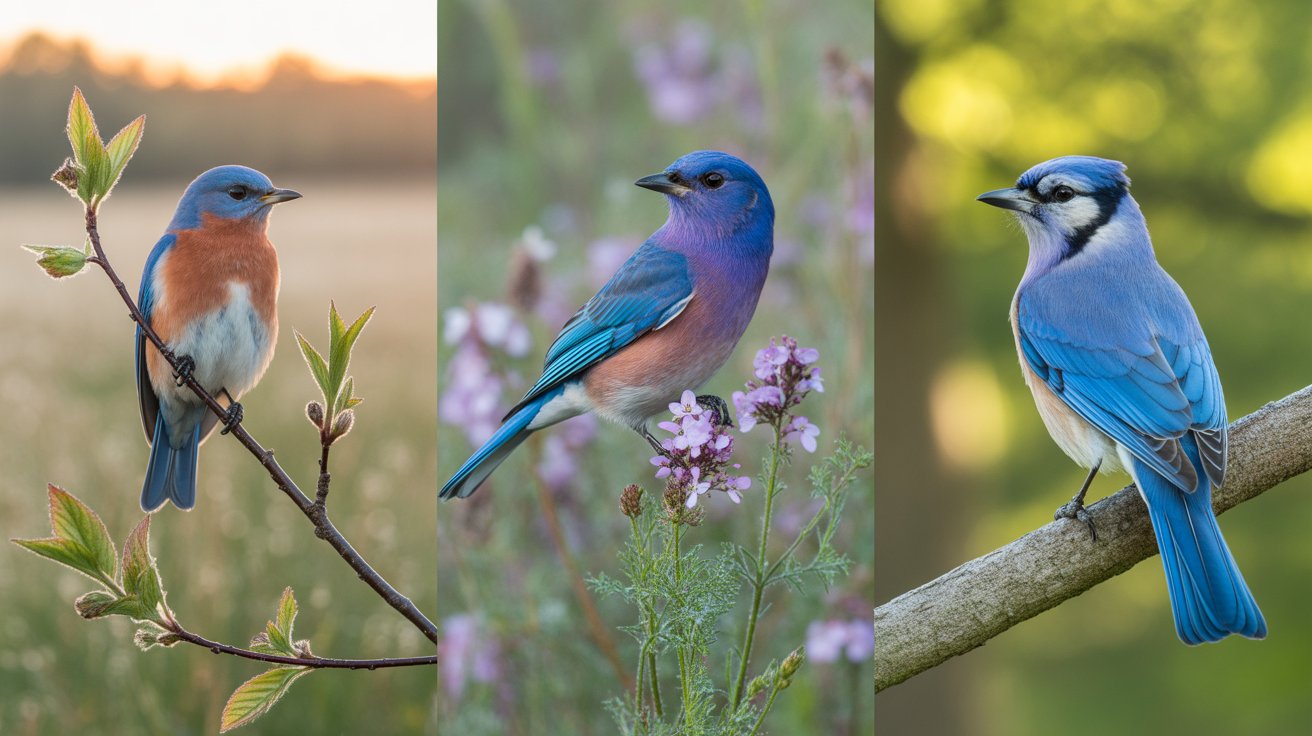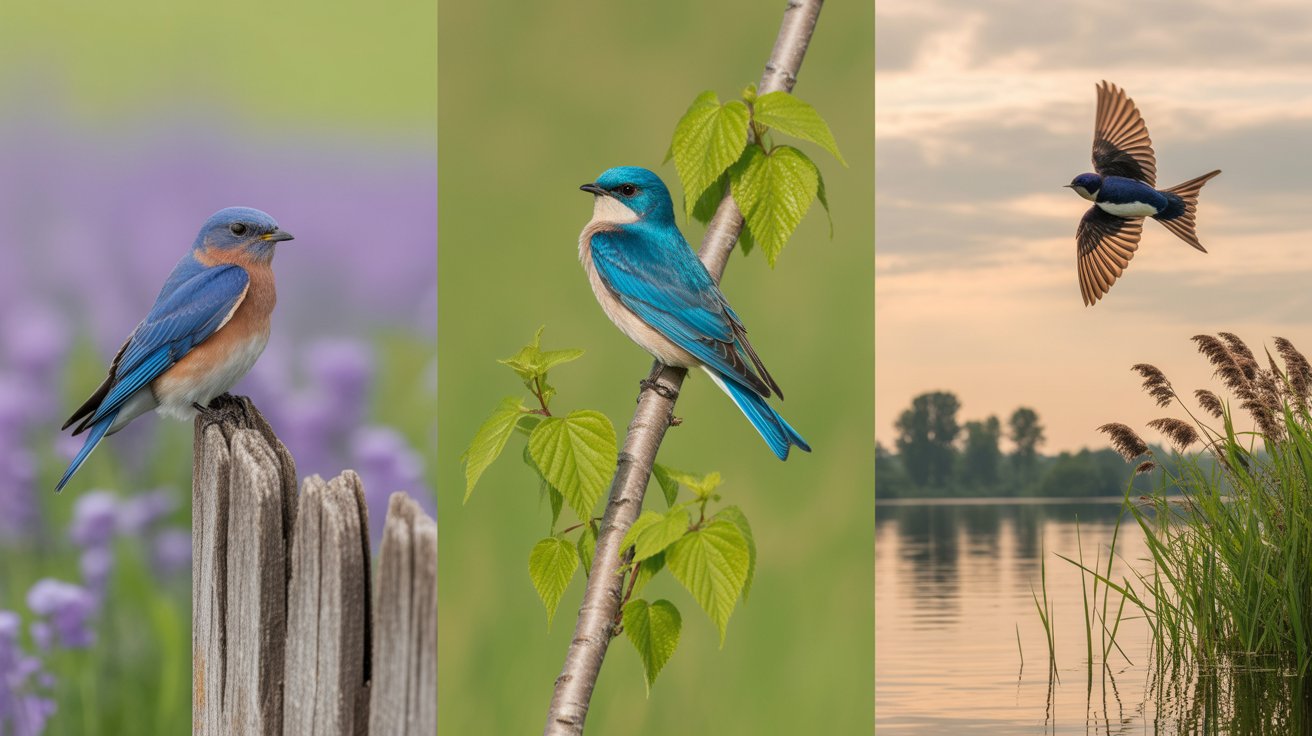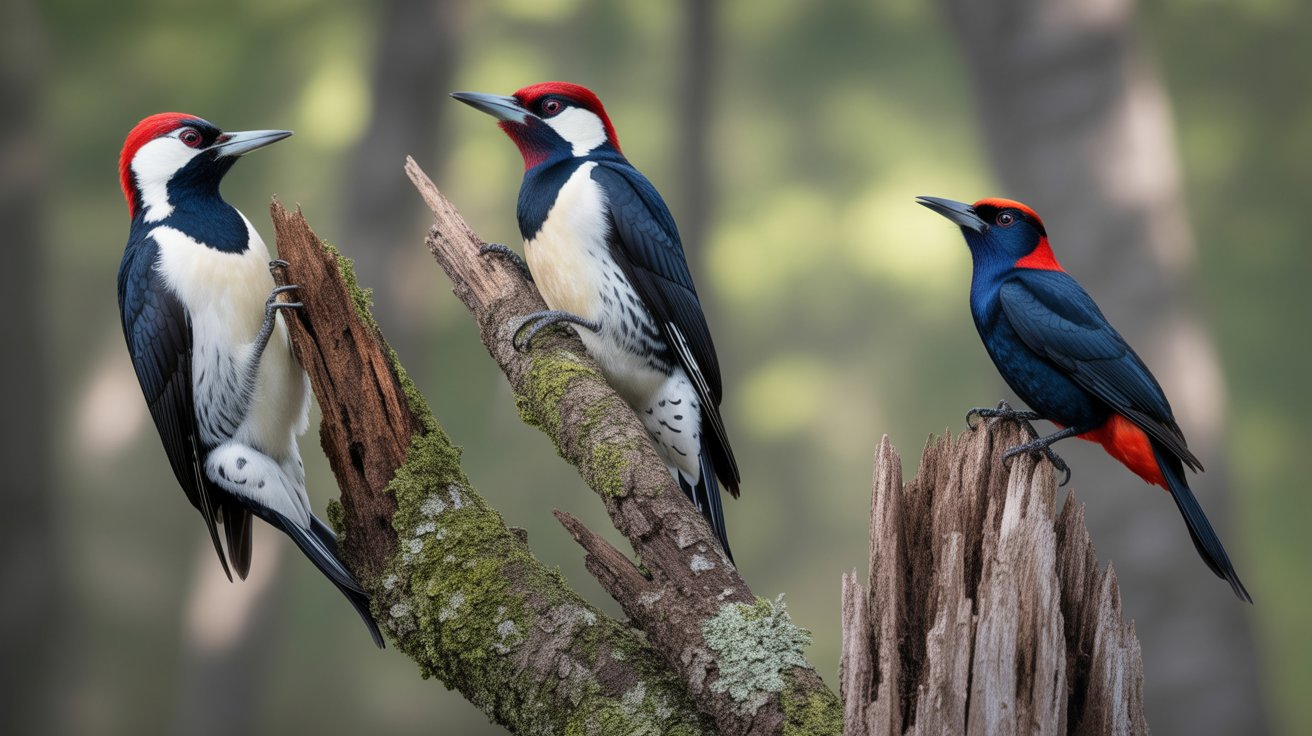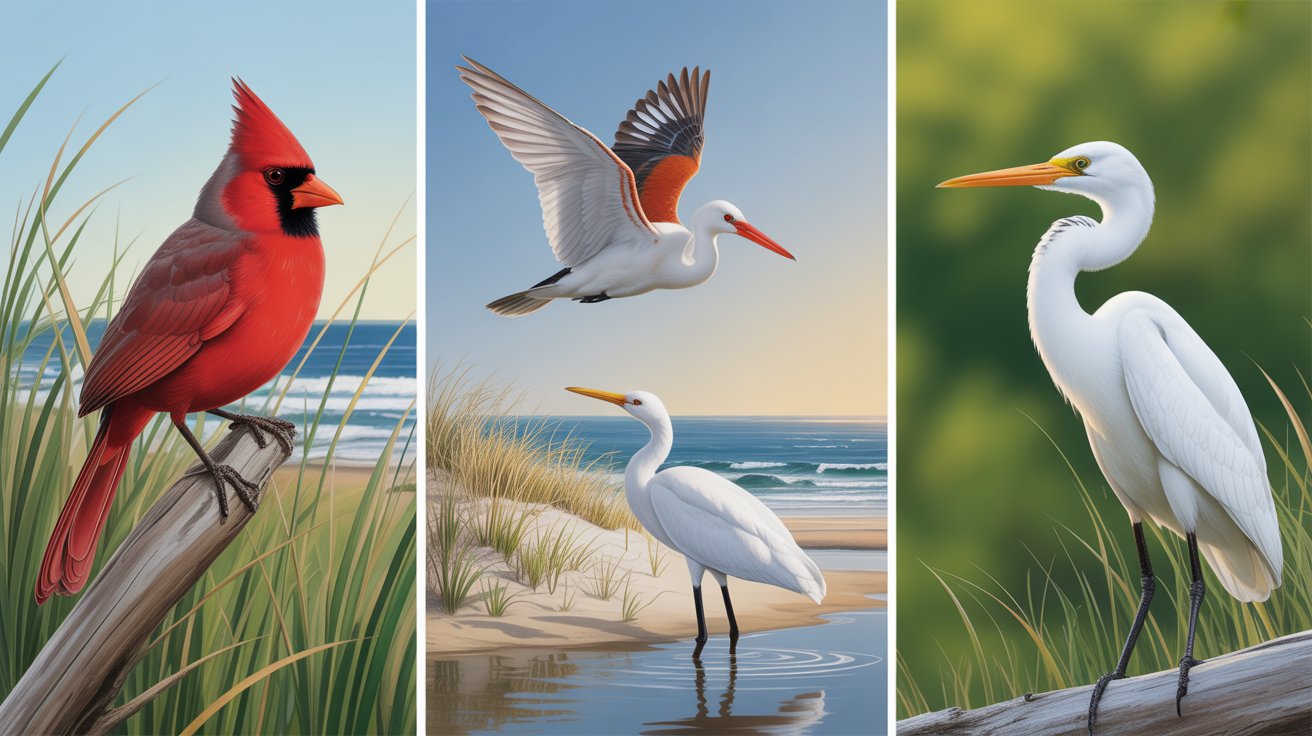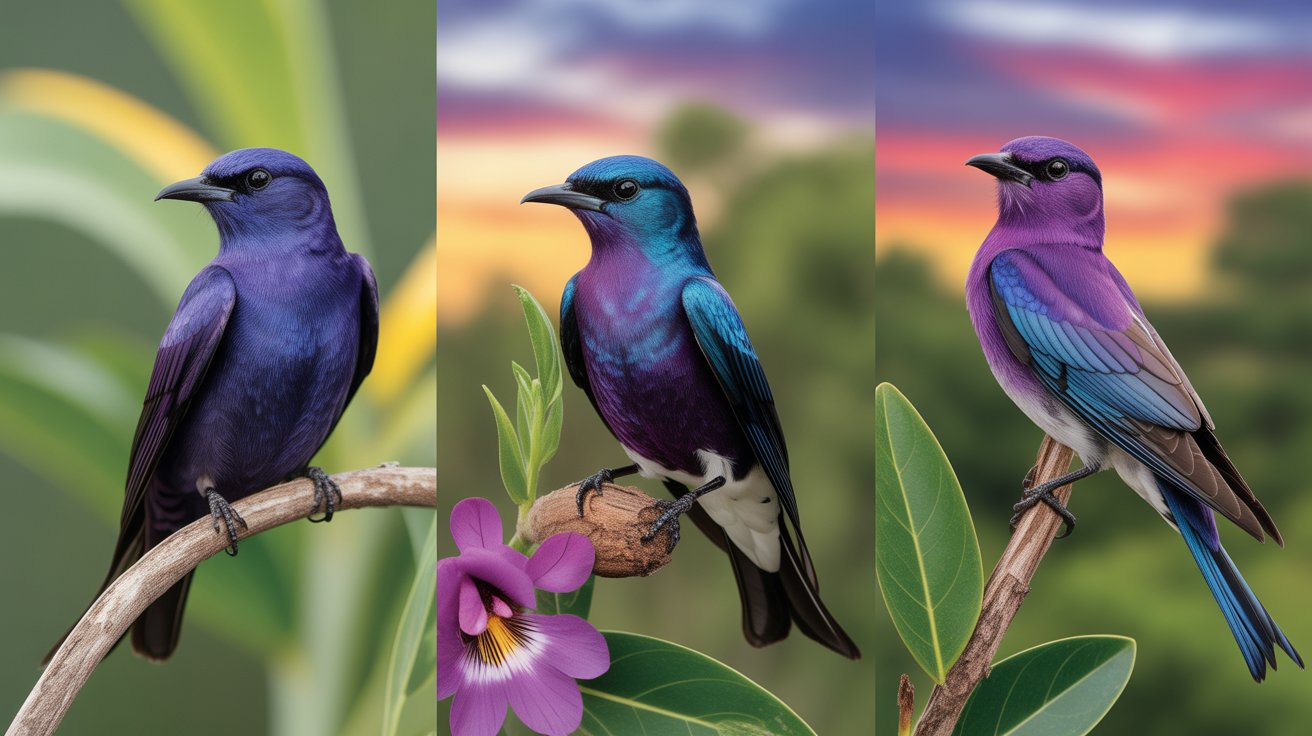Have you ever locked eyes with a bird and been captivated by the sheer intensity of its gaze? There’s something incredibly mesmerizing about blue eyes in birds. They’re rare, striking, and often carry a mysterious charm that makes you want to know more. Whether you’re a casual birdwatcher, a budding ornithologist, or just someone who appreciates nature’s unique beauty, blue-eyed birds are bound to grab your attention.
You might think that blue eyes are just a human trait, but in the avian world, they serve various purposes—from attracting mates to camouflage or even signaling health and genetic fitness. Blue-eyed birds span different habitats, from coastal shores to dense forests, and include both well-known species and some that are surprisingly under the radar.
In this article, you’re going to explore more than 15 fascinating birds with naturally blue eyes. Each one comes with its own set of unique features, behaviors, and habitats. Along the way, you’ll discover interesting facts, scientific details, and vivid descriptions that make these birds stand out not just for their eyes—but for their whole persona.
So grab your binoculars or just sit back and enjoy. This is your ultimate guide to the most stunning birds with blue eyes.
Contents
- 1. Blue-eyed Cockatoo
- 2. Black-crowned Night Heron
- 3. Emu
- 4. Great Egret (Breeding Season)
- 6. Double-crested Cormorant (Juvenile)
- 7. Satin Bowerbird (Male)
- 8. American White Ibis (Juvenile)
- 9. Shoebill Stork
- 10. Masked Lapwing
- 11. Nazca Booby (Juvenile)
- 12. Blue-eyed Shag (Imperial Shag)
- 13. Victoria Crowned Pigeon
- 14. Hyacinth Macaw
- 15. Eurasian Collared Dove (Juvenile)
- FAQs
- Conclusion
1. Blue-eyed Cockatoo

The Blue-eyed Cockatoo is one of the few parrots in the world with naturally blue irises. Found only on New Britain Island in Papua New Guinea, this bird is a real treasure of the tropical forests.
This cockatoo sports a white plumage that starkly contrasts with its sky-blue eyes. When you see it in the wild, the striking combination is simply unforgettable. Its crest, like other cockatoos, is expressive and adds to its charismatic appearance.
- Scientific Name: Cacatua ophthalmica
- Wingspan: Approximately 90–95 cm
- Length: 50 cm
- Weight: 500–800 grams
Blue-eyed Cockatoos are highly intelligent and social, often seen in small groups or pairs. They feed mainly on fruits, seeds, and nuts, and their powerful beaks can crack even the hardest shells. Unfortunately, due to habitat destruction and the pet trade, they are considered vulnerable.
Their piercing blue eyes aren’t just for show—they play a role in mating and social interactions. If you ever get the chance to observe one up close, you’ll understand why bird lovers cherish this rare species so much.
2. Black-crowned Night Heron
A Master of Twilight
This stocky, medium-sized heron may not be the most colorful bird in the wetlands, but its eyes certainly steal the show. When fully mature, the Black-crowned Night Heron develops stunning pale blue to bluish-white eyes, especially noticeable during breeding season.
Their thick neck, short legs, and hunched posture give them a distinctive silhouette. Active mainly during dusk and dawn, they’re skilled hunters of fish, frogs, and insects.
- Scientific Name: Nycticorax nycticorax
- Wingspan: 115–120 cm
- Length: 58–65 cm
- Weight: 800–1,000 grams
These herons can be found on every continent except Antarctica, making them one of the most widespread heron species. Their adaptability to urban wetlands, rice paddies, and mangroves speaks volumes about their survival skills.
While juveniles have orange or yellow eyes, adults in breeding season develop the unmistakable pale blue hue. If you’re birdwatching near water at dawn or dusk, keep your eyes peeled—you might just catch their glowing blue stare under the moonlight.
3. Emu
Australia’s Towering Blue-eyed Giant
When it comes to flightless birds, the Emu stands out not just for its size but also for its deep, ice-blue eyes. Native to Australia, this bird can grow over 6 feet tall and is second in height only to the ostrich.
Their shaggy brown feathers and long, powerful legs make them a striking sight in the outback. But it’s the haunting blue of their eyes that often steals the show, especially in full daylight.
- Scientific Name: Dromaius novaehollandiae
- Wingspan: N/A (flightless)
- Height: Up to 1.9 meters
- Weight: 30–45 kg
Emus are fast runners, capable of reaching speeds up to 50 km/h. They feed on plants, insects, and seeds, playing a vital role in seed dispersal across Australia’s grasslands.
Their blue eyes are thought to help reflect sunlight and regulate vision in bright environments. For such a massive bird, the Emu’s eyes give it a surprisingly gentle and curious expression.
4. Great Egret (Breeding Season)
Elegance with a Hint of Blue
Most of the year, the Great Egret looks like a graceful white bird with yellow eyes. But during breeding season, its eyes take on a remarkable turquoise to blue hue, making it even more attractive to potential mates.
This seasonal change is part of a broader transformation that includes ornamental feathers and green lores. If you see one with blue eyes, you’re witnessing the bird at its most beautiful and biologically ready state.
- Scientific Name: Ardea alba
- Wingspan: 130–170 cm
- Length: 80–100 cm
- Weight: 1–1.5 kg
You’ll find Great Egrets in freshwater wetlands, marshes, and estuaries worldwide. They hunt with slow, deliberate movements, often striking fish and amphibians with lightning-fast precision.
During the breeding season, the change in eye color enhances the bird’s courtship display. It’s one of those rare transformations in birds that you don’t want to miss.
5. White-eyed Vireo
A Tiny Songbird with a Surprise
Despite its name, the White-eyed Vireo actually has pale blue to whitish-blue eyes that stand out beautifully against its olive and yellow feathers. This small songbird is more often heard than seen due to its secretive nature and love for dense shrubs.
What makes this bird extra charming is the contrast between its brightly colored body and icy eyes—something you’ll notice if you’re lucky enough to catch a clear view through binoculars.
- Scientific Name: Vireo griseus
- Wingspan: 17–19 cm
- Length: 11–13 cm
- Weight: 10–14 grams
Common across the southeastern United States, the White-eyed Vireo sings a complex and energetic song, especially in spring and summer. It thrives in overgrown fields, forest edges, and thickets where it forages for insects and spiders.
Its pale blue-white eyes help with identification and give the bird a sharp, intelligent look. While small, it leaves a big impression once you spot it.
6. Double-crested Cormorant (Juvenile)
A Waterbird with Striking Baby Blues
Adult Double-crested Cormorants typically have emerald green eyes, but the juveniles can sometimes exhibit pale blue or blue-gray eyes. This trait, combined with their brownish body and long neck, makes young cormorants a unique sight.
They’re exceptional divers, often seen surfacing with fish in their slender beaks. These birds are common around freshwater lakes, rivers, and coastal areas.
- Scientific Name: Phalacrocorax auritus
- Wingspan: 115–130 cm
- Length: 70–90 cm
- Weight: 1.2–2.5 kg
Cormorants have a prehistoric look—webbed feet, long hooked bills, and an upright stance when drying their wings. But it’s the subtle blue hue in juveniles that can be quite captivating during a close encounter.
If you’re near a lake, keep an eye on the docks and buoys—you might find a juvenile cormorant watching you with its cool blue gaze.
7. Satin Bowerbird (Male)
A Blue Lover with Blue Eyes
Found in eastern Australia, the male Satin Bowerbird has a glossy, metallic-blue-black plumage that matches its stunning violet-blue eyes. It’s one of the few species that not only sports blue eyes but also collects blue objects to attract mates.
Males build bowers—arched displays of sticks—and decorate them with blue flowers, berries, plastic, and even bottle caps to impress females.
- Scientific Name: Ptilonorhynchus violaceus
- Wingspan: Around 55 cm
- Length: 27–33 cm
- Weight: 150–250 grams
These birds are excellent mimics, copying other bird calls and even human-made sounds. Their vivid blue eyes are an essential part of their courtship strategy.
When you see a male Satin Bowerbird perched by his bower, surrounded by blue trinkets, it’s hard not to be amazed by the lengths he goes to for love.
8. American White Ibis (Juvenile)
Blue-eyed Elegance in the Swamps
Juvenile American White Ibises are known for their light blue to bluish-gray eyes, which gradually darken as they mature. Even without their pure white adult plumage, these young birds carry a unique beauty thanks to their eye color and long, curved bills.
They forage by probing into mudflats and shallow waters, feeding on insects, crustaceans, and small fish.
- Scientific Name: Eudocimus albus
- Wingspan: 95–105 cm
- Length: 56–66 cm
- Weight: 750–1050 grams
Common in wetlands and coastal areas of the southeastern U.S., especially Florida, these social birds often travel and feed in large flocks.
When you’re birdwatching in swampy areas, don’t overlook the juveniles. Their soft blue eyes against mottled brown plumage make them surprisingly photogenic.
9. Shoebill Stork
Jurassic Eyes You’ll Never Forget
The Shoebill is one of the most prehistoric-looking birds on the planet—and its pale blue, almost human-like eyes only add to its awe-inspiring presence. Native to central tropical Africa, it prefers swampy, undisturbed habitats.
Its name comes from the massive, shoe-shaped bill it uses to catch lungfish, eels, and frogs.
- Scientific Name: Balaeniceps rex
- Wingspan: 230–260 cm
- Length: 110–140 cm
- Weight: 4–7 kg
Despite their intimidating size and stare, Shoebills are quiet, solitary birds. Their pale, ice-blue eyes are part of their fixed, intense gaze, which can feel like it sees right through you.
If you’re into bird photography or dream safaris, spotting a Shoebill is a once-in-a-lifetime thrill.
10. Masked Lapwing
Drama on the Grasslands
Native to Australia and New Guinea, the Masked Lapwing is a medium-sized shorebird that has striking yellow wattles and—during the right light—bluish-white eyes that give it a wild, alert look.
They’re often seen strutting around grassy fields, parks, and even airport runways.
- Scientific Name: Vanellus miles
- Wingspan: 75–85 cm
- Length: 35–40 cm
- Weight: 300–400 grams
While their aggressive nesting behavior is well-known (they swoop at intruders), their cool-toned eyes are a lesser-known but captivating feature. The contrast between the yellow face shield and light-colored eyes is unforgettable once noticed.
11. Nazca Booby (Juvenile)
Blue-eyed Seafarer
The adult Nazca Booby, found on the Galápagos Islands, has a piercing yellow-orange eye, but its chicks and juveniles are born with pale blue to bluish-gray eyes that shift as they mature.
Their fluffy white plumage and innocent stare make them among the most photogenic seabird chicks.
- Scientific Name: Sula granti
- Wingspan: 150–160 cm
- Length: 81–92 cm
- Weight: 1.5–2.2 kg
As they grow, the eye color changes, but while they have them, those blue eyes give the young birds a uniquely gentle expression—quite different from the fierce adults they’ll become.
12. Blue-eyed Shag (Imperial Shag)
The Eyes of the Antarctic
The Blue-eyed Shag, also called the Imperial Shag, is native to sub-Antarctic and Antarctic regions. Its sapphire-blue eyes are as vivid as the icy waters it fishes in.
This seabird has black and white plumage, a yellow crest, and thick feathers adapted to freezing temperatures.
- Scientific Name: Leucocarbo atriceps
- Wingspan: 120–130 cm
- Length: 70–75 cm
- Weight: 2–3.5 kg
Despite living in harsh conditions, these birds nest in colonies and exhibit strong pair bonds. Their eyes, set against white cheeks and black crown, give them a noble, statuesque appearance.
13. Victoria Crowned Pigeon
Blue Royalty of the Rainforest
One of the largest and most stunning pigeons in the world, the Victoria Crowned Pigeon not only has deep blue-gray feathers and an elegant lace-like crest—but also rich crimson-blue eyes that seem almost unreal.
Native to New Guinea’s lowland forests, these birds walk more than they fly.
- Scientific Name: Goura victoria
- Wingspan: 70–80 cm
- Length: 73–75 cm
- Weight: 2.1–2.5 kg
These regal pigeons are calm, slow-moving, and surprisingly tame in captivity. Their reddish-blue eyes are one of their most captivating features, especially when highlighted by their ornate plumage.
14. Hyacinth Macaw
The Gentle Giant with Blue on Blue
The Hyacinth Macaw, the world’s largest parrot, is a vibrant cobalt-blue bird with dark blue eyes encircled by yellow skin patches. While not pure light-blue eyed, their irises appear deep blue in some lighting, creating a surreal harmony with their plumage.
They inhabit parts of Brazil, Bolivia, and Paraguay, often in open woodlands.
- Scientific Name: Anodorhynchus hyacinthinus
- Wingspan: 110–120 cm
- Length: 100 cm
- Weight: 1.2–1.7 kg
Endangered due to habitat loss and the illegal pet trade, this majestic bird is cherished by conservationists. Its deep gaze and rich coloring make it one of the most spectacular parrots alive.
15. Eurasian Collared Dove (Juvenile)
Subtle Blue for the Young
While adults have red-orange eyes, juvenile Eurasian Collared Doves sometimes show pale bluish-gray irises that slowly turn red as they mature. Their soft gray feathers and gentle cooing make them a common but lovely backyard bird.
- Scientific Name: Streptopelia decaocto
- Wingspan: 47–55 cm
- Length: 31–33 cm
- Weight: 140–180 grams
Found throughout Europe, Asia, and the Americas, they adapt well to urban areas and gardens. Young doves with blue eyes are a sweet reminder of their early stage in life’s journey.
FAQs
Birds can have blue eyes due to pigments or structural coloration. In many species, the blue hue helps with mate selection and can indicate good health.
Yes, relatively. Blue eye color is not as common in birds as brown or yellow, making it a unique trait worth noting among species.
In some species, juveniles may start with blue or grayish-blue eyes that change as they mature. It depends on the bird.
While eye color doesn’t drastically alter vision, it can affect light reflection and glare sensitivity, particularly in bright habitats.
The Blue-eyed Cockatoo is often cited as one of the most iconic, especially due to its rarity and striking appearance.
Conclusion
Birds with blue eyes are truly nature’s showstoppers. Whether it’s the elegant Great Egret in its breeding colors or the towering Emu with its haunting stare, these birds offer a fascinating glimpse into avian diversity. Blue eyes in birds aren’t just about beauty—they play crucial roles in survival, courtship, and communication.
As you’ve seen, these birds span continents and ecosystems. From wetlands and forests to grasslands and islands, each one adds a splash of blue to its surroundings. If you’re a bird enthusiast, keep an eye out—literally—for these mesmerizing creatures.
Not only do they make for memorable sightings, but learning about them deepens your appreciation for nature’s intricate designs. Next time you’re outdoors, you might just catch a flash of blue from a tree branch or wetland edge. And when you do, you’ll know you’ve seen something rare and remarkable.
